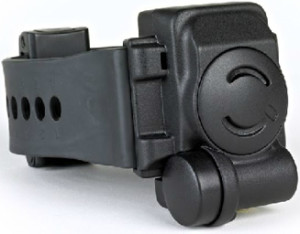
Ocala, Florida — In November Ocala Post reported the Marion County jail was understaffed and studies showed corrections officers are being put at risk.
The Department of Justice and the Florida Sheriff’s Association provided a strict and precise criteria to have the risk factor at the Marion County Jail evaluated. The evaluation showed that corrections officers were unable to take days off due to under-staffing. The evaluation also showed the under-staffing was so critical that corrections officers would have to obtain a note from a doctor, sometimes costing $30.00 for an appointment, just to get a day off in order to rest. The conclusion of the evaluation, according to the Department of Justice criteria, was that the Marion County Jail is dangerously understaffed and officers’ lives are being put in jeopardy; all due to the lack of funding.
Sheriff Chris Blair estimates the jail to be understaffed by approximately 60 officers. And because of the lack of officers to guard the inmates, the jail closed two pods; making the remaining pods over crowded by more than 300 inmates.
If the jail does not receive the funding to hire at least 60 new corrections officers, Marion County residents could soon see more criminals whom are currently in jail, released and on the streets.
While nothing has been set in stone, Sheriff Chris Blair is pushing for electronic GPS ankle monitoring.
Inmates would be released and monitored by an electronic GPS ankle bracelet, however research shows electronic monitoring does not stop a criminal from breaking the law, or removing the monitoring device.
Studies within the last six months have indicated monitoring is not fail safe, and often times alarms go unanswered, or are reported after the criminal being monitored has committed another crime.
“I think the perception … is that these people are being watched 24 hours a day by someone in a command center. That’s just not happening,” said Rob Bains, director of court services for Florida’s Ninth Judicial Circuit Court, which last spring halted its monitoring programs after two people wearing the devices were involved in separate shootings.
More than 100,000 sex offenders, parolees and people free on bail or probation wear ankle bracelets that can sound an alarm if they leave home without permission, fail to show up for work or linger near a playground or school.
In 2013 Corrections officials in Orange County, Florida reported they were so inundated with alerts that they halted all real-time notifications except when people tried to remove their bracelets; allowing Bessman Okafor, awaiting trial for a home invasion, to violate his curfew 53 times in a single month without any action being taken. During one of those outings last September, Okafor shot three people, killing a 19-year-old man who was a witness set to testify against [him.]
In Apopka, after a man on a GPS monitor was involved in an Easter Sunday shooting, administrators in Florida’s Ninth Judicial Circuit Court pointed to a “lack of procedures” for handling alarms. In a June 2013 report, the company in charge of monitoring more than 80 inmates that had been released on the electronic monitoring program, only had one person on duty. After the shooting, it took six hours before the company notified law enforcement that the criminal had removed his tracking device and disappeared.
Ocala Post reached out to a few of the manufacturers of the bracelets to inquire about the reliability of the systems and got a surprising response. The manufactures said, ” We stress that these devices were never intended to be foolproof.”
Reports also indicate that if agencies are understaffed, alarms for monitors often times go unanswered, or the officer responds after it is too late.
With the Marion County Sheriff’s Department being understaffed in the jail as well as on the streets, Marion County residents could possibly be put at risk if criminals are released on the electronic monitoring program.
Often times, even a non-violent offender released on GPS monitoring can turn tragic, or lead to witness intimidation, according to reports.
The Marion County Sheriff’s Office did make it clear that this issue could be resolved, and the closed jail pods reopened with funding to hire at least 30 more corrections officers.
Sheriff Blair maintains that his first priority is the safety of his officers, as well as the safety of Marion County residents.
“We would only be releasing non-violent offenders back into the community, and it would only be done with the blessing of the court,” said Sheriff Blair. “The monitoring system that would be used, is not the standard monitoring system. For example, the monitors would issue an alert to victims of domestic violence and if the subject places themselves in an area that is off-limits, both the victim and law enforcement would be notified.”
New technology for bracelet monitoring has come a long way. For instance, the monitoring ankle bracelet called the BI TAD (TAD) could be used for non-violent criminals suck as habitual DUI offenders.
TAD is a monitoring device which measures an offender’s alcohol consumption levels through vapors and perspiration passing through the skin.
TAD consists of an ankle-worn bracelet, which includes a sensor that detects drinking events; a base station placed in the offender’s home, communicates with a host computer maintained at BI’s national monitoring center. The TAD sensor measures for drinking via sweat or vapor, logs that data in the home base station, which then wirelessly forwards that data to the host server. That data is then matched against an offender’s profile, and supervising authorities are alerted if abnormalities exist for someone who is on a probation that prohibits drinking.
Residents should also know that if the monitoring devices the sheriff’s office plans to use are tampered with or removed, a signal will automatically prompt a response from law enforcement.
